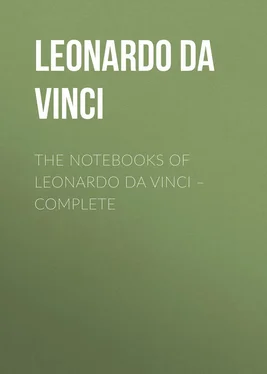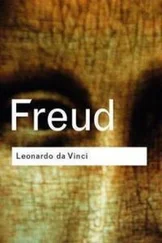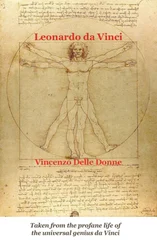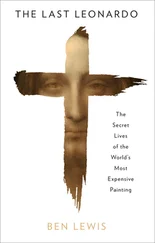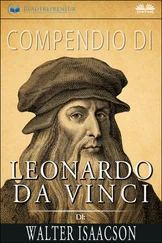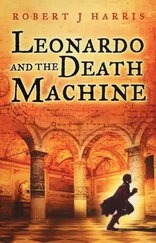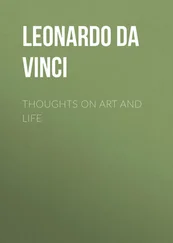Leonardo da Vinci - The Notebooks of Leonardo Da Vinci. Complete
Здесь есть возможность читать онлайн «Leonardo da Vinci - The Notebooks of Leonardo Da Vinci. Complete» — ознакомительный отрывок электронной книги совершенно бесплатно, а после прочтения отрывка купить полную версию. В некоторых случаях можно слушать аудио, скачать через торрент в формате fb2 и присутствует краткое содержание. Жанр: foreign_prose, foreign_home, visual_arts, foreign_antique, на английском языке. Описание произведения, (предисловие) а так же отзывы посетителей доступны на портале библиотеки ЛибКат.
- Название:The Notebooks of Leonardo Da Vinci. Complete
- Автор:
- Жанр:
- Год:неизвестен
- ISBN:нет данных
- Рейтинг книги:3 / 5. Голосов: 1
-
Избранное:Добавить в избранное
- Отзывы:
-
Ваша оценка:
- 60
- 1
- 2
- 3
- 4
- 5
The Notebooks of Leonardo Da Vinci. Complete: краткое содержание, описание и аннотация
Предлагаем к чтению аннотацию, описание, краткое содержание или предисловие (зависит от того, что написал сам автор книги «The Notebooks of Leonardo Da Vinci. Complete»). Если вы не нашли необходимую информацию о книге — напишите в комментариях, мы постараемся отыскать её.
The Notebooks of Leonardo Da Vinci. Complete — читать онлайн ознакомительный отрывок
Ниже представлен текст книги, разбитый по страницам. Система сохранения места последней прочитанной страницы, позволяет с удобством читать онлайн бесплатно книгу «The Notebooks of Leonardo Da Vinci. Complete», без необходимости каждый раз заново искать на чём Вы остановились. Поставьте закладку, и сможете в любой момент перейти на страницу, на которой закончили чтение.
Интервал:
Закладка:
When the eye, coming out of darkness suddenly sees a luminous body, it will appear much larger at first sight than after long looking at it. The illuminated object will look larger and more brilliant, when seen with two eyes than with only one. A luminous object will appear smaller in size, when the eye sees it through a smaller opening. A luminous body of an oval form will appear rounder in proportion as it is farther from the eye.
34
Why when the eye has just seen the light, does the half light look dark to it, and in the same way if it turns from the darkness the half light look very bright?
35
ON PAINTING.
If the eye, when [out of doors] in the luminous atmosphere, sees a place in shadow, this will look very much darker than it really is. This happens only because the eye when out in the air contracts the pupil in proportion as the atmosphere reflected in it is more luminous. And the more the pupil contracts, the less luminous do the objects appear that it sees. But as soon as the eye enters into a shady place the darkness of the shadow suddenly seems to diminish. This occurs because the greater the darkness into which the pupil goes the more its size increases, and this increase makes the darkness seem less.
[Footnote 14: La luce entrerŕ . Luce occurs here in the sense of pupil of the eye as in no 51: C. A. 84b; 245a; I—5; and in many other places.]
36
ON PERSPECTIVE.
The eye which turns from a white object in the light of the sun and goes into a less fully lighted place will see everything as dark. And this happens either because the pupils of the eyes which have rested on this brilliantly lighted white object have contracted so much that, given at first a certain extent of surface, they will have lost more than 3/4 of their size; and, lacking in size, they are also deficient in [seeing] power. Though you might say to me: A little bird (then) coming down would see comparatively little, and from the smallness of his pupils the white might seem black! To this I should reply that here we must have regard to the proportion of the mass of that portion of the brain which is given up to the sense of sight and to nothing else. Or—to return—this pupil in Man dilates and contracts according to the brightness or darkness of (surrounding) objects; and since it takes some time to dilate and contract, it cannot see immediately on going out of the light and into the shade, nor, in the same way, out of the shade into the light, and this very thing has already deceived me in painting an eye, and from that I learnt it.
37
Experiment [showing] the dilatation and contraction of the pupil, from the motion of the sun and other luminaries. In proportion as the sky is darker the stars appear of larger size, and if you were to light up the medium these stars would look smaller; and this difference arises solely from the pupil which dilates and contracts with the amount of light in the medium which is interposed between the eye and the luminous body. Let the experiment be made, by placing a candle above your head at the same time that you look at a star; then gradually lower the candle till it is on a level with the ray that comes from the star to the eye, and then you will see the star diminish so much that you will almost lose sight of it.
[Footnote: No reference is made in the text to the letters on the accompanying diagram.]
38
The pupil of the eye, in the open air, changes in size with every degree of motion from the sun; and at every degree of its changes one and the same object seen by it will appear of a different size; although most frequently the relative scale of surrounding objects does not allow us to detect these variations in any single object we may look at.
39
The eye—which sees all objects reversed—retains the images for some time. This conclusion is proved by the results; because, the eye having gazed at light retains some impression of it. After looking (at it) there remain in the eye images of intense brightness, that make any less brilliant spot seem dark until the eye has lost the last trace of the impression of the stronger light.
II.
Linear Perspective
We see clearly from the concluding sentence of section 49, where the author directly addresses the painter, that he must certainly have intended to include the elements of mathematics in his Book on the art of Painting. They are therefore here placed at the beginning. In section 50 the theory of the "Pyramid of Sight" is distinctly and expressly put forward as the fundamental principle of linear perspective, and sections 52 to 57 treat of it fully. This theory of sight can scarcely be traced to any author of antiquity. Such passages as occur in Euclid for instance, may, it is true, have proved suggestive to the painters of the Renaissance, but it would be rash to say any thing decisive on this point.
Leon Battista Alberti treats of the "Pyramid of Sight" at some length in his first Book of Painting; but his explanation differs widely from Leonardo's in the details. Leonardo, like Alberti, may have borrowed the broad lines of his theory from some views commonly accepted among painters at the time; but he certainly worked out its application in a perfectly original manner.
The axioms as to the perception of the pyramid of rays are followed by explanations of its origin, and proofs of its universal application (58—69). The author recurs to the subject with endless variations; it is evidently of fundamental importance in his artistic theory and practice. It is unnecessary to discuss how far this theory has any scientific value at the present day; so much as this, at any rate, seems certain: that from the artist's point of view it may still claim to be of immense practical utility.
According to Leonardo, on one hand, the laws of perspective are an inalienable condition of the existence of objects in space; on the other hand, by a natural law, the eye, whatever it sees and wherever it turns, is subjected to the perception of the pyramid of rays in the form of a minute target. Thus it sees objects in perspective independently of the will of the spectator, since the eye receives the images by means of the pyramid of rays "just as a magnet attracts iron".
In connection with this we have the function of the eye explained by the Camera obscura, and this is all the more interesting and important because no writer previous to Leonardo had treated of this subject_ (70—73). Subsequent passages, of no less special interest, betray his knowledge of refraction and of the inversion of the image in the camera and in the eye (74—82).
From the principle of the transmission of the image to the eye and to the camera obscura he deduces the means of producing an artificial construction of the pyramid of rays or—which is the same thing—of the image. The fundamental axioms as to the angle of sight and the vanishing point are thus presented in a manner which is as complete as it is simple and intelligible (86—89).
Leonardo distinguishes between simple and complex perspective (90, 91). The last sections treat of the apparent size of objects at various distances and of the way to estimate it (92—109).
General remarks on perspective (40-41).
40
ON PAINTING.
Perspective is the best guide to the art of Painting.
[Footnote: 40. Compare 53, 2.]
41
The art of perspective is of such a nature as to make what is flat appear in relief and what is in relief flat.
The elements of perspective—Of the Point (42-46).
Читать дальшеИнтервал:
Закладка:
Похожие книги на «The Notebooks of Leonardo Da Vinci. Complete»
Представляем Вашему вниманию похожие книги на «The Notebooks of Leonardo Da Vinci. Complete» списком для выбора. Мы отобрали схожую по названию и смыслу литературу в надежде предоставить читателям больше вариантов отыскать новые, интересные, ещё непрочитанные произведения.
Обсуждение, отзывы о книге «The Notebooks of Leonardo Da Vinci. Complete» и просто собственные мнения читателей. Оставьте ваши комментарии, напишите, что Вы думаете о произведении, его смысле или главных героях. Укажите что конкретно понравилось, а что нет, и почему Вы так считаете.
